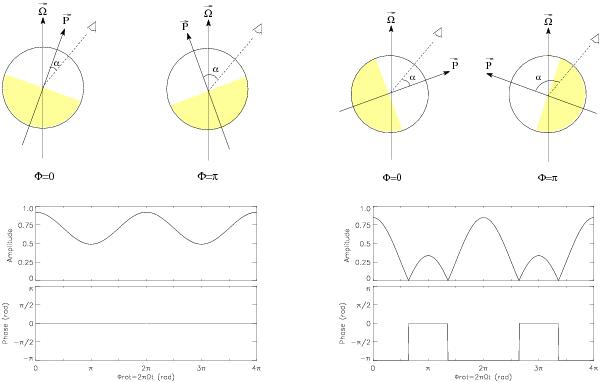Fig. A.1

Representation of the light curves for linear polarized (ψ = 0) dipole modes with different inclinations of the pulsation axis. This illustrates the cases discussed in Sect. A.0.1. In both figures, the position of the observer is fixed, i = 40°. Left panel: the dipole axis remains close to the line-of-sight during the rotation of the star. The observer only sees one hemisphere of the mode, and thereby does not observe a phase jump during the rotation period. Hence, a maximum and minimum of the rotational envelope of the pulsation are observed at Φ = 0 and Φ = π. Right panel: the dipole axis is now sufficiently inclined with respect to the line-of-sight so that the two hemispheres of the dipole can been seen by the observer. A phase jump by π radians occurs when the node of the oscillations crosses the plane (i,Ω). In this case, the amplitude of the rotational envelope leads to two maxima of different amplitudes (α(0) < α(π)).
Current usage metrics show cumulative count of Article Views (full-text article views including HTML views, PDF and ePub downloads, according to the available data) and Abstracts Views on Vision4Press platform.
Data correspond to usage on the plateform after 2015. The current usage metrics is available 48-96 hours after online publication and is updated daily on week days.
Initial download of the metrics may take a while.






